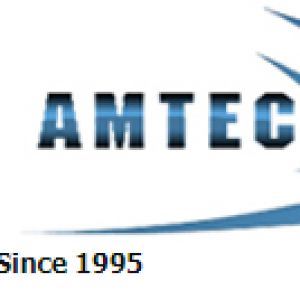Pad Printing got revolution is printing industryPosted by Applied Manufacturing Technologies, Inc. on March 5th, 2018 You must have noticed that now famous clothing brands have switched from while Sewn-in label to a print directly on your t-short of shirts. Many really appreciated this and were in relief, while others have questioned the whereabouts of the tags that have already been ripping off anyway. Now companies have gone tagless. Let me tell you that you will find numerous benefits of switching to tagless. This really helps in giving you more comfort in ensuring your branding stays on the shirt and is not removed or destroyed. So if you have a clothing brand, then you have several methods to choose such as pad printing, heat transfer, and screen printing. But this post will only focus on pad printing. Well before knowing more about Pad printing, you must know that it has been in function for centuries. But let me tell you, the technique is changed but the process is still the same. Pad picks up the ink, and then the ink is stick to the pad, which is later pressed onto a substrate. Pad printer is actually the main equipment and the smallest thing is the ink, which is equally important. Each of the ink is unique and has covered a long way in both resilience and color. Let me tell you the fact that Clothing labels were actually used by Unionists to show activism over employers and after the end of World War II, these labels became one of the best marketing tools to promote brands and even provides the knowledge of how you can care your clothes. Pay attention, there were actually 3 different ways by which you could print tags: Woven: They were more used to expensive yet simple brands. Screen Printing: It gave a bit of more colors to be used. Inkjet: Gives full-color labels with amazing graphics. You must even know how ink is made: There are 4 components which help in making Pad printing inks. Pigment, Solvent, Resins, and Additives are those components. Pigment generally refers to the color of the ink in a powered state, Solvent is nothing but another term of thinner, resins help in forming the ink and additives which leads in flexibility, flow, and pigment stability. Let’s know the advantages of pad printing finishes: Pad Printing is an amazing printing process which makes it possible to transfer a two-dimensional image onto a three-dimensional product. It actually has several benefits: 1: It is capable of printing on any kind of surface and shape: Why Pad printing is famous because it has the unique feature unlike other that it can print any shape and surface like hollow, concave, convex, curved, etc. There are many manufacturing companies providing pad printing to print logos, website addresses to phone numbers from basketballs to cell phones and is also providing Catheter printing services if you deal with this business. Capable of printing on every substance: Well, this is true that pad printing can be used on any kind of substance such as plastic, metal, glass, pharmaceuticals, ceramics, and food. Better Resolution: Don’t you believe that sticking a logo, phone number or web address on a product really doesn’t make any difference if the consumer can’t read or see it properly. Let me tell you that Pad printing has better resolution quality than the screen or hot-stamp printing which it comes to surfaces that have traditionally been difficult to print on. Pad printing is not just best at resolution but it’s also extremely resistant to flaying and chemicals. If you still have not experienced any modern version of pad printing, then let me tell you that modernized versions of Pad printing machines include robotic printing capabilities. It even has laser-guided accuracy measurement, friendly with a wide range of products. Pad Printers are capable of working on products with two or more different heights. You must use the appropriate ink depending on the surfaces you are going to print. Use of Pad Printing: Pad printers are commonly used on the irregular surface and shapes. For example, you require pad printing on the keyboards to transfer the image of each alphabet, number, and symbols. Pad printing objects can be easily found in industries like electronic components, household appliances, toys, sporting goods, industrial buttons, promotional items, etc. Conclusion: As now you are aware of the fact that Pad Printing has the capability of transferring design, images, and text on any kinds of the objects. This new technology is in trend as it has the wider range of material selection, improved performance, and reliable image quality. Like it? Share it!About the AuthorApplied Manufacturing Technologies, Inc.Joined: January 19th, 2018 Articles Posted: 3 More by this author |


